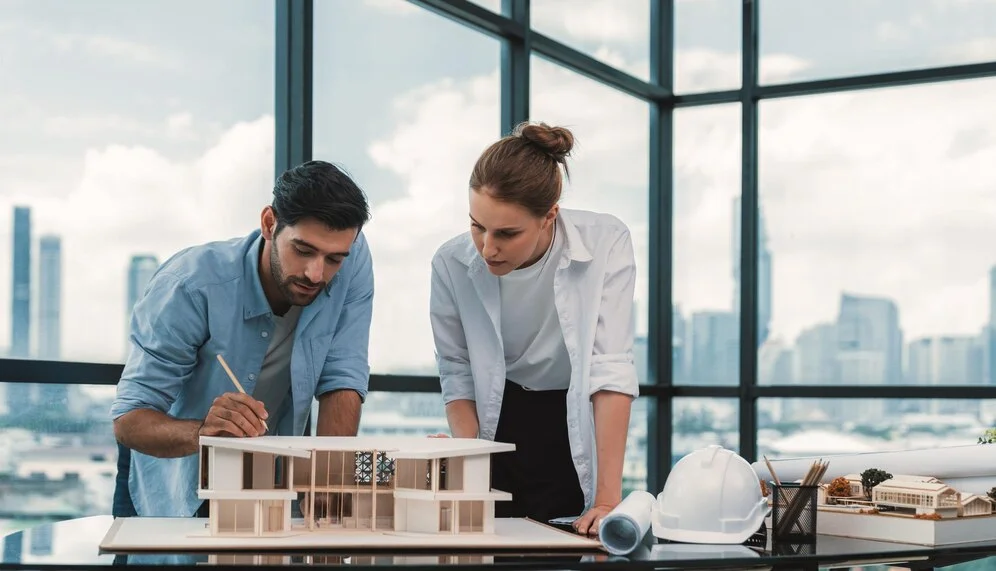Building Design Services: A Comprehensive Overview
The demand for innovative and efficient building design services has remained unchanged in today’s fast-paced world. Building design plays a crucial role in shaping the spaces where we live, work, and play, whether for residential, commercial, or industrial purposes. This article delves into the various aspects of building design services, exploring what they entail, the key components, the importance of sustainable design, and how technology is revolutionizing the industry.
What Are Building Design Services?
Building design services encompass a broad range of activities and disciplines that contribute to the planning and creation of a building. These services are typically provided by architects, engineers, and other professionals who work together to ensure that a structure is aesthetically pleasing but also functional, safe, and compliant with local regulations.
Key Components of Building Design Services
Key components of building design services are discussed below:
Architectural Design
Architectural design is the cornerstone of building design services. Architects are responsible for creating the overall concept of a building, including its shape, layout, and style. This involves extensive collaboration with clients to understand their needs and preferences and with engineers to ensure the feasibility of the design.
Structural Engineering
Structural engineering focuses on the stability and integrity of a building. Structural engineers design the framework that supports the building, ensuring it can withstand various loads and stresses. This includes selecting appropriate materials and designing the building’s foundation, beams, and columns.
Mechanical, Electrical, and Plumbing (MEP) Design
MEP design is crucial for the functionality of any building. Mechanical engineers handle heating, ventilation, and air conditioning (HVAC) systems, electrical engineers design electrical distribution and lighting systems, and plumbing engineers ensure the proper flow of water and waste management.
Interior Design
Interior design involves selecting materials, colors, and furnishings to create a comfortable and aesthetically pleasing environment inside the building. This service often overlaps with architectural design, as it contributes to the overall look and feel of the space.
Landscape Design
Landscape design is concerned with the outdoor areas surrounding a building. This includes planning gardens, walkways, and other outdoor features that enhance the aesthetic appeal and functionality of the property.
Project Management
Project management is a critical component that ensures all aspects of the building design process and pure competition are coordinated and executed on time and within budget. Project managers oversee the planning, design, and construction phases, liaising between clients, architects, engineers, and contractors.
The Importance of Sustainable Design
Sustainable design has become a significant focus within the building design industry. With growing awareness of environmental issues, there is a strong emphasis on creating energy-efficient buildings, using sustainable materials, and having minimal environmental impact.
Energy Efficiency
Energy-efficient buildings are designed to reduce energy consumption through better insulation, efficient HVAC systems, and renewable energy sources like solar panels. This reduces the building’s carbon footprint and lowers operating costs for the occupants. By incorporating business electricity strategies, companies can further optimize their energy usage, ensuring a steady, reliable power supply while minimizing waste.
Sustainable Materials
Using sustainable materials, such as recycled steel, bamboo, and low-VOC paints, contributes to the overall environmental responsibility of a building. These materials are chosen for their durability, low environmental impact, and ability to be recycled or repurposed at the end of their life cycle.
Water Conservation
Water conservation is another critical aspect of sustainable design. This can be achieved by installing low-flow fixtures, rainwater harvesting systems, and using drought-resistant landscaping.
Healthy Indoor Environments
Sustainable building design also focuses on creating healthy indoor environments. This includes ensuring good air quality, maximizing natural light, and using non-toxic materials to promote the well-being of the building’s occupants.
The Role of Technology in Building Design
Technology is revolutionizing industrial building design services, making the process more efficient and allowing for greater creativity and precision.
Building Information Modeling (BIM)
BIM is a digital representation of a building’s physical and functional characteristics. It allows architects, engineers, and contractors to collaborate on a single model, reducing errors and improving the accuracy of the design. BIM also facilitates better decision-making throughout the lifecycle of the building, from design to demolition.
3D Printing
3D printing is emerging as a game-changer in building design. It allows for the creation of complex architectural models and even full-scale building components, speeding up the design process and enabling the exploration of innovative designs that were previously impossible.
Virtual Reality (VR) and Augmented Reality (AR)
VR and AR technologies are transforming the way designs are presented to clients. With VR, clients can take a virtual tour of a building before it’s built, giving them a better understanding of the space and allowing for more informed decisions. AR, conversely, can overlay design elements onto the real world, helping to visualize changes in a real-world context.
Smart Building Design
Intelligent buildings are equipped with advanced technologies that enhance the occupants’ comfort, efficiency, and security. This includes integrating IoT devices, automated lighting, heating and cooling systems, and advanced security systems. These features improve the occupants’ quality of life and make the building more energy-efficient and sustainable.
Challenges in Building Design Services
Despite the advancements in technology and sustainable practices, building design services face several challenges:
Regulatory Compliance
Navigating the complex web of building codes and regulations can be challenging. Ensuring a design meets all local, state, and federal requirements is crucial to avoid delays and additional costs.
Budget Constraints
Staying within budget while delivering a high-quality design is a constant challenge in the industry. This requires careful planning, cost management, and sometimes tricky decisions regarding materials and features.
Client Expectations
Managing client expectations is another significant challenge. Clients often have specific project visions, which may only sometimes align with practical or budgetary constraints. Clear communication and setting realistic expectations from the outset are essential.
Environmental Concerns
Balancing environmental concerns with client desires and budget constraints can be challenging. Sustainable design often requires more upfront investment, which can be a deterrent for some clients.
Conclusion
Building design services are vital to the construction industry, encompassing various disciplines and expertise. The focus on sustainability, efficiency, and technology will only grow as the industry evolves. By embracing these trends and overcoming the associated challenges, building design professionals can create functional, beautiful, environmentally responsible, and future-proof spaces.
Whether planning a new building or renovating an existing one, engaging with comprehensive building design services is crucial to ensuring a successful outcome. The right design can transform a space, enhance its value, and contribute to the well-being of its occupants for years to come.

Deepak Sharma
Namaste! I’m Deepak Sharma, the creative mind behind SocialFunda, your go-to hub for Facebook bios, captivating captions, Instagram bios, and a treasure trove of Hindi Shayari. As a digital enthusiast, I am passionate about curating content that adds a touch of flair to your online presence.

